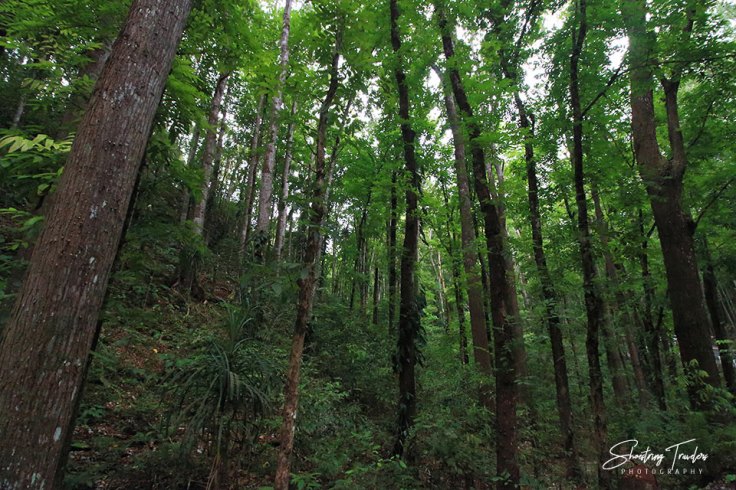Mention Bohol and the first thing that comes into a Pinoy’s mind is the Chocolate Hills. These grass-covered, conical geologic formations have been practically synonymous with the province as far as we can remember. And so, on our first ever visit to Bohol, it’s unthinkable that we would pass up a visit to the island province’s most famous attraction.

Chocolate Hills
With Nina’s uncle Rene and auntie Tess in tow, we took a packaged tour with local Richard as our driver-tour guide. Starting from Panglao Island, we drove the 70 kilometers to Carmen town and the famed hills; Richard suggested we start at the farthest point of the tour and make our way backwards. Almost 2 hours later, we were staring at hundreds of conical hills stretching as far as our eyes could see – 1,268 of them as some say and as many as 1,776 – from a tourist-filled viewing deck called the called the Chocolate Hills Complex.


The vast collection of symmetrical, conical mounds of grass-carpeted limestone had already turned yellow as the hot and dry season started to kick in. By mid-summer these hills would turn brown, somewhat resembling chocolate kisses, hence the name. Then, when the rainy season peaks sometime in August or September, the hills take on a verdant green hue.

The Chocolate Hills are concentrated into a 50 square kilometer area that also includes the towns of Batuan and Sagbayan. We’ve thought about going to another view deck in Sagbayan which promises to be even better than the one in Carmen as it gives panoramic views of the hills in every direction plus Bohol Strait and Cebu Island in the distant background. However, that would mean driving another 18 kilometers through rolling terrain, eating up a sizable chunk of the remaining time for the rest of our tour. (This is what you get for trying to cram all of Bohol Island’s destinations into a full day of touring. And really, there is so much more to see and do in this province.)
Tarsiers

Instead we retraced our steps and drove back towards Bilar town and a Tarsier Conservation Area in the municipality. Philippine tarsiers are synonymous with Bohol almost as much as the Chocolate Hills even though these small primates (most are just 3.5 to 6 inches tall) may also be found in Leyte, Samar, Siargao, Basilan and Dinagat. The sanctuary in Bilar is one of the few places certified by the Department of Environment and Natural Resources to take care of this primate.

There are less than a dozen tarsiers scattered in a small forested area in the conservation area in Bilar and they were easy to find, most clinging to trees along the path that snaked its way through the forest. Most of them were asleep when we first saw them – tarsiers are nocturnal – but some woke up even as we silently trudged along the pathway, their huge eyes casting a shy stare in our direction. Those large eyes are what gives the tarsier its excellent night vision for hunting insects.
Bilar Manmade Mahogany Forest

Moving on from our encounter with the miniscule tarsiers we drove back for Loboc town. We’ve already encountered the Bilar Manmade Mahogany Forest earlier on our way to the Chocolate Hills but this time we stopped briefly in the middle of the 2-kilometer stretch of mahogany trees bordering Loboc and Bilar towns.

Compared to the surrounding areas, the air inside the forest is cool and soothing. Carpets of fallen red and brown leaves cloaked the forest floor adding a beautiful color contrast to the green foliage of the mahogany trees that almost completely blocked out the sun. While enjoying the crisp, cool air and the shade afforded by the thick canopy of trees, we noticed something strange.

The still-thriving forests we have visited elsewhere – as few as they are these days – have always come alive with the sounds of birds and other hidden wildlife. There weren’t any in Bilar’s mahogany forest for the simple reason that mahogany is not native to the Philippines. Local wildlife are not drawn to them. These mahogany trees were planted in the late 1960’s to repopulate forested areas that were practically wiped out by slash and burn agricultural practices. Excellent intentions but not well-informed. Forestry experts say that local trees should have been planted instead.
It’s a somewhat sad footnote to the first half of our Bohol Countryside Tour but it didn’t take away from the beauty and excitement of the rest of our one-day trip. And there’s more to come!
How to Go On a Bohol Countryside Tour
A Countryside Tour of Bohol may usually be arranged with your resort as ours was. We also noticed locals at the airport arrival area offering this tour to newly arrived guests. Finally a countryside tour may be arranged online with tour operators.
The Countryside Tour normally includes the following: the Blood Compact Shrine (Tagbilaran), Baclayon Church, Chocolate Hills (Carmen), Bilar Manmade Forest (Bilar), Tarsier Sanctuary (we had ours at Bilar but there’s another one at Corella), the Hanging Bridge (Sevilla), Loboc River Cruise (with lunch), Butterfly Sanctuary.
This list varies from one operator to another but with minor differences. We decided to swap the butterfly sanctuary and the Hanging Bridge for the Hinagdanan Cave in Dauis. Operators will charge P2,500 to P3,000 for this tour. This amount only covers the vehicle (car or van) and driver and not the entrance fees of the destinations and lunch at the Loboc River Cruise.
Here’s a breakdown of the entrance fees:
Chocolate Hills entrance fee: P50 per person
Tarsier Sanctuary (Bilar) entrance fee: P60
Butterfly Sanctuary: P20
Hanging Bridge: P10
Hinagdanan Cave: P50 (add P75 if you want to swim)
Loboc River Cruise with lunch: P550
Baclayon Church museum: P50












What a comprehensive info you have about the famed chocolate Hills. Thanks.
Welcome! Thanks for the visit.